calsfoundation@cals.org
Bradford (White County)
| Latitude and Longitude: | 35º25’23″N 091º27’21″W |
| Elevation: | 256 feet |
| Area: | 0.87 square miles (2020 Census) |
| Population: | 678 (2020 Census) |
| Incorporation Date: | September 19, 1893 |
Historical Population as per the U.S. Census:
|
1810 |
1820 |
1830 |
1840 |
1850 |
1860 |
1870 |
1880 |
1890 |
1900 |
|
– |
– |
– |
– |
– |
– |
– |
– |
– |
223 |
|
1910 |
1920 |
1930 |
1940 |
1950 |
1960 |
1970 |
1980 |
1990 |
2000 |
|
382 |
342 |
675 |
681 |
720 |
779 |
826 |
950 |
874 |
800 |
|
2010 |
2020 |
|
|
|
|
|
|
|
|
|
759 |
678 |
|
|
|
|
|
|
|
|
Bradford is the northernmost incorporated community in White County, located to the west of U.S. Highway 67, just south of the border with Jackson County. Bradford coalesced around a train depot, named Bradford Allen Station, when the Cairo and Fulton Railroad built its line to the White River in Newport (Jackson County) in 1872. The railroad enabled commerce in early Bradford to expand beyond subsistence farming and opened distant markets to its agricultural bounty.
White settlers began coming to the Bradford area about sixty years before the construction of the railroad; the community during that time was on the White River at Old Grand Glaise, located in Jackson County about six miles northeast of present-day Bradford. River access provided a means of commercial transport, but occasional inundations were problematic until levee construction tamed the river. Bradford Allen Station was built well away from threatening flood waters, and, just six years after the establishment of the rail depot, Bradford had a population of fifty. Businesses located at Bradford in 1878 included a blacksmith, sawmill, grist mill, saloon, grocer, and general store. The town formally incorporated in 1893.
Railroad access permitted commercial and agricultural activity to thrive in early Bradford. More than twenty businesses were located in town by 1908; within thirty years, Bradford had expanded beyond a small village to a major shipping point along the railroad. Raw and cut timber, cotton, mussel shells, grapes, and (particularly) strawberries were shipped out of Bradford by rail.
The timber boom that spread across Arkansas following the Civil War was more prevalent in other places but did manage to touch White County; sawmills and lumber manufacturers located in Bradford were among the first enterprises to utilize access to the railroad. Timber concerns provided some employment in Bradford but did not compare with the growing of subsistence and cash crops. Most town and area residents worked as farmers, raising livestock and growing subsistence crops in the hills to the north and west of Bradford, or growing cotton or soybeans in the rich bottomlands to the east along the White River. Strawberries, however, were the most crucial commercial crop harvested in Bradford. Local farmers harvested the berries from the hills around Bradford to supplement their income; trucks and wagons by the dozens streamed into Bradford every spring to await freight trains to ship their produce. Although nothing is shipped out of town by rail anymore, strawberry farming continues as a major twenty-first-century agricultural concern around Bradford.
Up until the late 1960s, freshwater mussels were harvested by Bradford fishermen, who raked the bottoms of the White River to collect the mollusks for their meat and shells. Locally, a small industry emerged in the early 1900s, using mussel shells to make buttons. This industry eventually subsided, but, by the 1960s, mussel shells from the White River were in high demand in Japan, where they were used in the process of culturing pearls. Depleted shell supplies elsewhere in the United States drove Japanese demand for shells from the White River, which attracted river diggers by the hundreds starting in 1964. The mussel shell boom in Bradford was short lived, however, because a mechanical dredger owned by a company in Memphis, Tennessee, was put to work harvesting shells at a much faster pace than single-man or family operations could match. The mechanical dredger harvested a ton of shells per hour, which consequently depleted the riverbed that cultivated so many mussels. The mussel crop at Bradford ran out by 1967.
Probably the best-known individual from Bradford was real estate developer and Whitewater scandal figure Jim McDougal, who was born there in 1940, the only son of Leo and Lorene McDougal. His father co-owned and operated the Middleton & McDougal Feed Store on Front Street in Bradford; he later purchased and operated two grocery stores and a furniture store, as well as purchasing and retooling an old cotton gin to make cattle feed. A variety store at 101 Main Street in Bradford was also purchased by Leo McDougal and managed by Jim McDougal for a time in the 1960s.
Passenger service and freight stops along the Bradford railroad were discontinued in the 1960s, so all commercial traffic today uses U.S. Highway 67. Modern-day Bradford consists of some retail businesses, with many residents employed in Searcy (White County) or Newport. Students in Bradford and surrounding parts of White, Jackson, and Independence counties are served by the Bradford School District and attend classes at Bradford Elementary or Bradford High School. The private Trinity Christian School is also located in Bradford.
For additional information:
Byler, Nancy Lynn. “History of Bradford, Arkansas.” White County Heritage 27.1 (1989): 19–28.
Norwood, C. W. “General Directory of Railroad Towns in White County, Arkansas, 1878.” White County Heritage 12.1 (1974): 46.
White County, Arkansas. https://www.whitecounty.ar.gov/(accessed April 13, 2022).
Adam Miller
Searcy, Arkansas
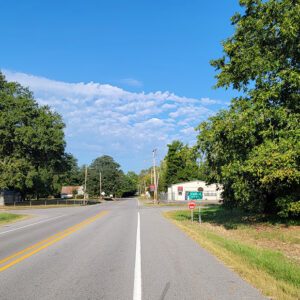 Entering Bradford
Entering Bradford 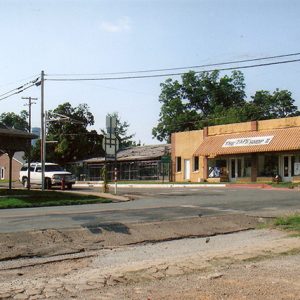 Bradford Street Scene
Bradford Street Scene  Bradford Veterans Memorial
Bradford Veterans Memorial 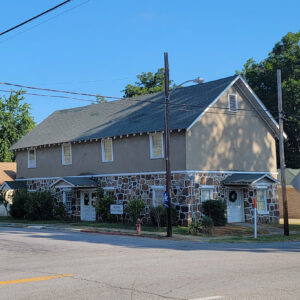 Bradford Library
Bradford Library 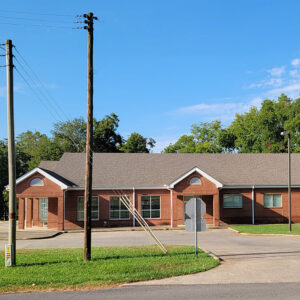 Bradford Post Office
Bradford Post Office  Bradford School District
Bradford School District  Bradford Seniors
Bradford Seniors  Bradford Street Scene
Bradford Street Scene  Bradford Water Tower
Bradford Water Tower 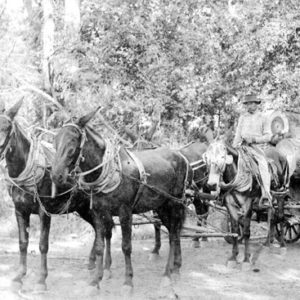 Logging in White County
Logging in White County 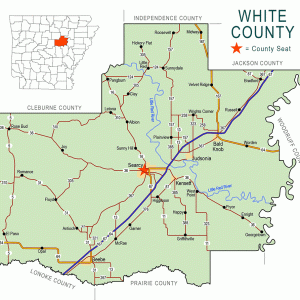 White County Map
White County Map 




Comments
No comments on this entry yet.